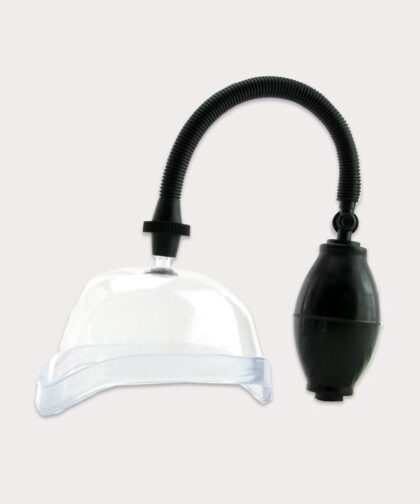
- What is BDSM?
- Brief history of BDSM
- Common misconceptions about BDSM
II. BDSM Terminology
- Dominant and submissive
- Sadism and masochism
- Bondage and discipline
- Safe words
III. BDSM Safety
- Physical and emotional safety
- Negotiating boundaries and consent
- Aftercare
IV. BDSM Play
- Types of BDSM play
- Choosing the right toys and equipment
- Techniques and positions
- Finding and joining a BDSM community
- Online resources and forums
- Attending BDSM events and parties
- Types of BDSM relationships
- Power exchange dynamics
- Communication and trust
VII. Advanced BDSM Topics
- Edge play
- Roleplay and fantasy
- Impact play
VIII. Conclusion
- Recap of key points
- Final thoughts on BDSM and sexual expression.
Introduction to BDSM
What is BDSM?
BDSM stands for bondage and discipline, dominance and submission, and sadism and masochism. It is a form of sexual expression and lifestyle that involves consensual power exchange between consenting adults. This can include physical restraint, psychological control, sensation play, and other activities designed to heighten sensations and create a strong sense of intimacy and trust between partners.
BDSM is often misunderstood and stigmatized, but it is important to note that all activities are fully consensual and practiced with safety in mind. In fact, safety and communication are key components of BDSM culture, with practitioners emphasizing the importance of clear communication, trust, and mutual respect.
BDSM can be enjoyed in many different ways, and there is no one “right” way to practice it. Some people prefer light play, such as sensory deprivation or light spanking, while others enjoy more intense activities like heavy bondage or impact play. Whatever your preferences may be, exploring BDSM can be a rewarding and fulfilling experience that helps to build intimacy, trust, and connection with your partner(s).
Brief History About BDSM
BDSM, which stands for bondage and discipline, domination and submission, and sadism and masochism, has been around for centuries in various forms. The practice of BDSM involves consensual power exchange and a range of sexual and non-sexual activities that can include bondage, spanking, role-playing, and more.
The term “BDSM” was not officially coined until the 1960s, but the roots of BDSM can be traced back to ancient times. In ancient Greece, for example, there were paintings depicting people engaging in sexual activities involving bondage and domination. During the 18th and 19th centuries, BDSM became more visible as erotic literature and artwork began to feature BDSM themes.
The Marquis de Sade, a French author who lived in the 18th century, was known for his explicit writings that included BDSM themes and practices. In the 20th century, BDSM gained more mainstream attention as a result of the work of scholars such as Kinsey, Masters, and Johnson. The publication of the Kinsey Reports in the 1950s, which studied human sexuality, included information about BDSM practices.
Today, BDSM has become more accepted and is practiced by a diverse range of people. It has also been the subject of research and academic study, leading to a greater understanding of the various aspects of BDSM and its place in human sexuality.
Common Misconceptions About BDSM
Misconception #1: BDSM is all about pain and punishment.
While some BDSM activities may involve pain and punishment, BDSM is not solely about these things. In fact, BDSM is all about consensual power exchange between partners, which can take many forms. This can include anything from simple role-playing to more complex forms of domination and submission.
Misconception #2: BDSM is abusive.
One of the biggest misconceptions about BDSM is that it is abusive. However, BDSM is all about consensual power exchange between partners. This means that all BDSM activities are based on mutual consent and respect, and any activity that is not consensual is not considered BDSM.
Misconception #3: People who engage in BDSM are mentally ill.
Another common misconception about BDSM is that people who engage in it are mentally ill. However, there is no evidence to support this claim. In fact, studies have shown that people who engage in BDSM are just as mentally healthy as those who do not.
Misconception #4: BDSM is only for people who are into extreme sex.
While some BDSM activities may be considered extreme, not all BDSM is like this. In fact, there are many different types of BDSM activities, and some may be more mild than others. Ultimately, BDSM is about exploring and playing with power exchange between partners, which can take many forms.
Misconception #5: BDSM is dangerous.
While some BDSM activities may have risks associated with them, all BDSM activities are based on mutual consent and respect. This means that people who engage in BDSM are aware of the risks and take steps to minimize them. Additionally, many BDSM activities can be done safely and without any risk of injury or harm.
BDSM is a diverse and complex topic that is often misunderstood. By dispelling these common misconceptions, we can gain a better understanding of what BDSM is really about and the benefits that it can bring to those who engage in it.
BDSM Terminology
By understanding these common BDSM terms, you can start to explore this exciting and rewarding aspect of sexuality. Remember, communication and consent are key in any BDSM play, so make sure to discuss your desires and boundaries with your partner(s) before engaging in any activities.
The Most Common BDSM Terms:
1. Safeword: is a word or phrase that is agreed upon between partners to signal that play needs to stop. This ensures that everyone involved feels safe and comfortable during BDSM activities.
2.Dominate/submissive: These terms are used to describe the power dynamic between partners in BDSM. The dominant partner, or Dom, is in control, while the submissive partner, or sub, submits to their partner’s control.
3.Bondage:This refers to the act of restraining someone, usually with ropes or handcuffs, for erotic or aesthetic purposes.
4. Discipline: This refers to the use of punishment or correction to reinforce desired behaviors in BDSM play.
5.Sadism: This term is used to describe sexual arousal or gratification from inflicting pain or humiliation on others.
6. Masochism: This term is used to describe sexual arousal or gratification from receiving pain or humiliation from others.
7.Top/bottom: These terms are used to describe the active and passive roles in BDSM play. The top is the active partner who is doing the dominating or inflicting the pain, while the bottom is the passive partner who is receiving the pain or being dominated.
8. Dungeon: This term is used to describe a space, often in a private home or a club, that is specifically designed for BDSM activities.
9. Play party: This refers to a gathering of people who are interested in engaging in BDSM play together.
BDSM Safety
BDSM can be an exciting and pleasurable activity, but it also involves a level of risk that needs to be acknowledged and mitigated. Safety is a critical aspect of BDSM that should always be taken seriously.
Physical and Emotional Safety
BDSM activities can be physically and emotionally intense, which is why safety is paramount. BDSM practitioners prioritize the well-being of their partners and themselves to avoid accidents and injuries.
Physical safety involves using proper equipment, such as restraints and impact toys, and ensuring they are in good condition. Practitioners should also establish safe words or signals that can immediately stop the activity if necessary. Another important aspect of physical safety is aftercare, which refers to the care given to a partner after a scene to promote recovery and prevent emotional distress. This can include cuddling, checking for injuries, providing water, and talking about the experience.
Emotional safety involves communication and trust between partners. It’s important to establish boundaries and limitations before starting any activity and to continuously check in with each other during the scene. It’s also important to know the signs of emotional distress and to have a plan for addressing it if it arises.
Overall, BDSM can be a safe and consensual way to explore one’s sexuality and push boundaries, but it requires education, communication, and a commitment to physical and emotional safety.
Negotiating boundaries and consent is an essential aspect of BDSM play. BDSM can involve a wide range of activities, from light spanking to more intense forms of play, such as rope bondage or knife play. It is important for all parties involved to establish clear boundaries and communicate their consent before engaging in any activities.
Negotiating boundaries involves discussing with your partner(s) what activities you are comfortable with, what your limits are, and what types of communication you prefer during play. This can be done through conversation or by using a BDSM checklist to identify preferences and limits. Boundaries can also be renegotiated as needed, and it is important to always respect the boundaries of your partner(s).
Consent is also crucial in BDSM play. Consent means that all parties involved have agreed to participate in the activities and understand what will happen. It is important to obtain clear and enthusiastic consent before engaging in any activities, and to check in regularly to ensure that consent has not been withdrawn.
BDSM involves a level of trust between partners, and it is important to prioritize the physical and emotional safety of all parties involved. This means checking in regularly, communicating openly, and having a plan in place in case of emergency. Safe words or signals can be established to communicate when a participant wants to stop or slow down, and it is important to respect these signals and respond accordingly.
Negotiating boundaries and consent is crucial in BDSM play to ensure physical and emotional safety for all parties involved. Open communication, regular check-ins, and a plan for emergencies are all important aspects of safe and consensual play.
Aftercare
Aftercare is an essential part of any BDSM experience. It refers to the time and attention given to the sub or bottom after a scene has ended. The main purpose of aftercare is to ensure that the sub or bottom feels safe, cared for, and comfortable. This helps them process any intense emotions or physical sensations that they may have experienced during the scene.
Aftercare can take different forms depending on the needs and preferences of the individuals involved. It may involve physical care such as providing water or food, cuddling, or applying first aid to any injuries. It may also involve emotional care such as reassurance, debriefing, or discussing how the scene went and any concerns that arose.
Aftercare is a responsibility that falls on both the dominant and the submissive partner. Dominants should ensure that they are attentive to their partner’s needs, and that they provide the necessary care and support. Submissives should communicate their needs and feelings clearly and openly, and be willing to accept care and support from their partner.
Overall, aftercare is a crucial aspect of BDSM that promotes physical and emotional safety, trust, and respect between partners. It is a reminder that BDSM is not just about the scene itself, but also about the care and attention given to each other before, during, and after the experience.
BDSM Play
BDSM play encompasses a wide range of activities that can be both physically and mentally stimulating. Here are some of the most common types of BDSM play:
1. Bondage and Discipline (B&D): This refers to the use of physical restraints and discipline techniques to create a power dynamic between partners. This can include rope bondage, handcuffs, or other forms of restraint, as well as spanking, paddling, or other forms of punishment.
2. Dominance and Submission (D/s): In D/s play, one partner takes on the role of dominant, while the other takes on the role of submissive. This can involve giving or receiving commands, and can include power exchange through things like kneeling, crawling, or other submissive behaviors.
3. Sadism and Masochism (S&M): This type of play involves the exchange of pain and pleasure, with one partner taking on the role of sadist (inflicting pain) and the other taking on the role of masochist (receiving pain).
4. Roleplay: In BDSM roleplay, partners take on different personas and act out fantasies or scenarios. This can include anything from teacher/student play to doctor/patient play, or more elaborate scenarios like kidnapping or interrogation.
These are just a few examples of the many types of BDSM play that can be explored. It’s important to remember that all BDSM play should be safe, sane, and consensual, with clear communication and boundaries established between partners.
Choosing The Right Toys and Equipment
There are many different types of toys and equipment available for BDSM play, and it’s important to choose the ones that are right for you and your partner. Some popular BDSM toys and equipment include handcuffs, blindfolds, paddles, floggers, gags, ropes, and nipple clamps.
When choosing BDSM toys and equipment, it’s important to consider your experience level and the experience level of your partner. If you’re new to BDSM play, it’s important to start with simpler toys and equipment and work your way up to more advanced items. You should also consider any physical limitations or sensitivities that you or your partner may have and choose toys and equipment that are appropriate.
It’s also important to choose high-quality toys and equipment that are safe and durable. Look for toys and equipment made from high-quality materials, such as leather or silicone, and avoid toys that are made from materials that can break or deteriorate easily.
Choosing the right BDSM toys and equipment requires careful consideration and communication with your partner. It’s important to discuss your desires and boundaries and choose toys and equipment that will enhance your play and keep you both safe.
Techniques and Positions
There are countless techniques and positions that can be used in BDSM play, and individuals or couples can choose to explore those that best suit their interests and desires. Some common BDSM techniques include bondage, spanking, sensory deprivation, and impact play.
Bondage involves restraining someone with ropes, cuffs, or other restraints, while spanking involves using the hand or a tool to strike the body.
Sensory deprivation involves limiting the senses of the submissive partner, such as by using blindfolds or earplugs, to enhance their vulnerability and heighten sensations. Impact play refers to striking the body with various tools, such as paddles, whips, or floggers. BDSM positions can also vary widely and depend on the specific interests and preferences of the individuals involved.
Some popular positions include kneeling, standing, or lying down while restrained, and may involve specific hand or body placements. It’s important for individuals engaging in BDSM play to discuss and establish clear boundaries and limits, communicate openly and honestly, and prioritize the physical and emotional safety of all parties involved.
Consent and communication are key components of any BDSM play, and it’s important to always respect the limits and boundaries set by oneself and one’s partner.
BDSM Community
The BDSM community in Australia is a diverse and active community that is centered around creating a safe, consensual, and supportive environment for those interested in BDSM. There are numerous BDSM clubs and organizations across Australia, with events ranging from small private parties to large public events like BDSM-themed markets and festivals.
One of the largest BDSM events in Australia is Oz Kink Fest, a week-long festival held annually in Melbourne that features workshops, performances, and parties focused on BDSM and fetish culture. Other notable events include the Sydney Fetish Ball and the King Perth Apartment In addition to events, there are also online communities and forums for Australian BDSM enthusiasts to connect and discuss their interests.
These forums offer a way for individuals to connect with others in the community, share resources and advice, and find partners for BDSM play. Overall, the BDSM community in Australia is a vibrant and welcoming community that offers a space for those interested in BDSM to explore their interests and connect with like-minded individuals.
However, it’s important to note that consent, safety, and respect are paramount in the BDSM community, and individuals should always practice these values when engaging in BDSM play.
Attending BDSM Events and Parties
Attending BDSM events and parties in Australia is a great way to immerse oneself in the BDSM community and explore one’s kinky desires in a safe and welcoming environment. These events range from educational workshops to play parties and can be found in major cities like Sydney, Melbourne, Brisbane, Perth and Adelaide.
It’s important to do research and understand the rules and etiquette of the specific event or party before attending. Some events may require pre-registration or have dress codes, while others may have specific rules around consent and safety. For those new to the community, attending educational workshops and discussion groups can be a great way to learn about BDSM practices and etiquette, as well as connect with other kinky individuals.
Play parties provide opportunities to explore BDSM techniques and connect with like-minded individuals in a safe and consensual way. It’s important to remember that attending BDSM events and parties is always a personal choice and should only be done with the proper knowledge and understanding of BDSM practices and safety.
BDSM Relationships
BDSM relationships are unique and complex, as they are built upon the foundation of power dynamics and trust. These relationships involve a dominant partner who has control over the submissive partner, with each partner having their own set of roles and responsibilities. In a BDSM relationship, communication is key, and it’s important for both partners to establish clear boundaries and limits before engaging in any activities.
These boundaries can include things like specific types of play, levels of pain or intensity, and the use of safe words to communicate when something is uncomfortable or needs to stop. It’s also important for both partners to have a clear understanding of their own desires, needs, and limits. This can involve exploring one’s own sexuality and preferences, as well as being open and honest with their partner about what they are comfortable with.
Some BDSM relationships may involve a level of 24/7 power exchange, where the power dynamics are present at all times. Others may involve specific scenes or play sessions that are negotiated ahead of time. Regardless of the specific structure of the relationship, it’s important for both partners to feel safe, respected, and valued. This can involve regular check-ins to ensure that both partners are happy and comfortable, as well as establishing mutual trust and respect.
Common Types of Relationships
1. Dominant/submissive (D/s): In this type of relationship, one partner (the dominant) has control over the other (the submissive) both in and out of the bedroom.
2. Master/slave (M/s): In an M/s relationship, one partner (the Master or Mistress) has complete control over the other (the slave), including their actions, thoughts, and emotions.
3. Top/bottom: This type of relationship is focused more on physical sensation and power exchange during play, rather than a full-time power dynamic. Switch: A switch is someone who can take on either a dominant or submissive role, depending on the situation or their partner’s desires.
4. Polyamorous: Some BDSM relationships involve more than two partners, with everyone involved being aware and consenting to the dynamic.
5. Daddy/mommy and little: This type of relationship is often focused on caretaking, with one partner (the Daddy or Mommy) taking on a parental role and the other (the little) being cared for.
6. Owner/pet: In an owner/pet relationship, one partner (the Owner) takes on a dominant role while the other (the pet) takes on a submissive role, often with animalistic qualities.
Communication and Trust
Cmmunication and trust are essential components of any BDSM relationship. In a BDSM context, communication refers to the ability to express one’s desires, limits, and expectations clearly and openly, while trust refers to the belief that one’s partner will respect and honor those boundaries.
One example of how communication and trust can be established is through the use of safewords. A safeword is a word or phrase that is agreed upon by both partners and is used to communicate when a limit has been reached. When the safeword is spoken, all play stops immediately, and both partners check in with each other to ensure that everything is okay.
Another example is negotiating scenes or activities in advance. This involves discussing the specific BDSM activities or roles that will be involved, as well as any limits or boundaries that need to be respected. By doing this, both partners can ensure that they are on the same page and that there are no misunderstandings or surprises during play.
It’s important to note that communication and trust are ongoing processes that require regular check-ins and updates. As partners become more comfortable with each other, they may find that their boundaries or desires change, and it’s important to communicate these changes openly and honestly. Ultimately, a healthy BDSM relationship is built on a foundation of communication and trust, and both partners must be committed to maintaining these elements in order for the relationship to thrive.
Advanced BDSM Topics
Advanced BDSM topics can involve more intense and risky activities that require even more communication, negotiation, and trust between partners. These activities may include edge play, breath play, fire play, and needle play, to name a few.
Edge play involves engaging in activities that are considered more dangerous or intense than the typical BDSM practices, such as knife play or electrostimulation. These activities require a high level of skill, experience, and trust between partners.
Breath play involves restricting the flow of air to the lungs, either by choking or other methods. This type of play is considered very risky and should only be attempted by experienced players who have thoroughly discussed their limits and safety precautions.
Fire play is another advanced BDSM topic that involves using fire to create sensation or pain. This can include using candles, fire wands, or other fire-related instruments to create a sensory experience for the submissive partner.
Needle play involves using needles to create temporary piercings on the body. This practice requires a high level of skill and knowledge of anatomy to avoid causing serious injury to the submissive partner.
Roleplay and Fantasy involves one or both partners adopt a specific role or persona, and act out a scenario or fantasy. This can range from traditional roles such as dominant/submissive to more creative roles such as teacher/student, boss/employee, or even alien/human.
Impact Play involves the striking of one person’s body by another person for sexual pleasure. Impact play can be done using various objects such as hands, paddles, floggers, whips, and canes, among others. The sensation of impact play can vary depending on the type of implement used and the intensity of the strike. Some people enjoy the sharp sting of a paddle or cane, while others prefer the thud of a heavier implement like a flogger.
Movies with BDSM Elements
1. Fifty Shades of Grey (2015)
2. Secretary (2002)
3. The Duke of Burgundy (2014)
4. The Story of O (1975)
5. The Piano Teacher (2001)
6. The Pet (2006)
7. The Notorious Bettie Page (2005)
8. Venus in Fur (2013)
9. Preaching to the Perverted (1997)
10. Bound (1996)
Conclusion
In conclusion, BDSM is a complex and multifaceted practice that can offer many physical and emotional benefits to those who engage in it. Despite the many misconceptions that exist about BDSM, it is important to understand that it is a consensual and negotiated practice that involves communication, trust, and respect between all parties involved.
Whether you are a beginner or an experienced practitioner, it is important to prioritize safety and to choose the right equipment and toys for your needs. It is also important to communicate your boundaries and desires clearly, and to trust your partner to do the same. BDSM can be enjoyed in many different forms, from simple role-playing scenarios to more advanced techniques like edge play.
And for those who are interested in exploring the BDSM community, there are many events and parties held throughout Australia that provide a safe and welcoming space for like-minded individuals. Overall, BDSM can offer a unique and fulfilling experience for those who are interested in exploring their sexuality and pushing their boundaries.
As long as it is practiced safely and with consent, it can be a positive and empowering part of one’s sexual journey.
-
$55.00

Diamonte Handle BDSM Flogger
-
$105.00

Fetish Fantasy Series Vibrating...
-
Sale!

$75.00Original price was: $75.00.$54.99Current price is: $54.99.Fetish High Intensity Pussy...
-
$20.00

Lux Fetish Nipple Clip...
